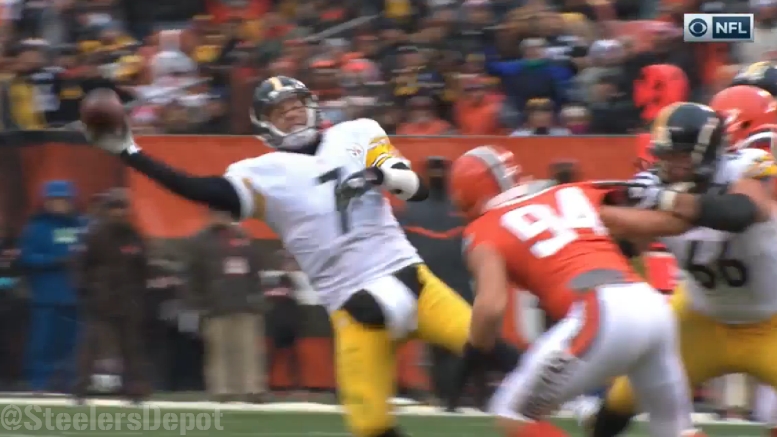Sammie Coates was a breakthrough story during the early part of the 2016 season for the Pittsburgh Steelers based on what he did in the first five games, but the headlines for the rest of his campaign were all focused on what he wasn’t doing—which was catching passes, and often, simply playing.
The dividing line between the first portion of his season and the rest was, per common knowledge, a hand injury that he suffered in that fifth game that limited him to sometimes not playing on offense at all, or perhaps just a few snaps. He only got a large number of snaps as the season progressed in a couple of games.
And when he did get snaps—and targets—they overwhelmingly shared a common theme, as over 60 percent of the passes that he faced came with the ball traveling at least 20 yards in the air. As I talked about yesterday, these are generally low-percentage throws as it is, and it played a role in the massive dip in Coates’ reception percentage.
Another factor that played a role in this, I believe, was another injury, this the knee injury suffered by quarterback Ben Roethlisberger. There is a clear disparity in terms of efficiency in his pre-injury targets and his post-injury targets.
I should point out that this is quite significant, because Roethlisberger threw a higher percentage of deep passes than anybody else in the league, “and it wasn’t really close”, according to a graphic from Pro Football Focus, which shows that nearly 17 percent of his passes traveled over 20 yards. The second-highest percentage was three points lower.
I went back into my charting data from last season the pull the numbers on Roethlisberger’s deep targets in 2016 and divided them between the throws that occurred before his injury as well as after it.
Over the course of the first five-plus games leading up to his injury, Roethlisberger attempted 33 passes of 20 or more yards, completing 15 of them for seven touchdowns and two interceptions. One target drew a pass interference call, while another stemmed from a defensive offside call.
Following his injury, Roethlisberger completed 23 of 80 deep targets, also for seven touchdowns, in addition to three interceptions. Three of those targets came after an offside penalty, while six drew either a hold or a pass interference call. A 24th pass was completed, but drew an offensive pass interference call, so it was discarded.
Percentagewise, he completed 15 of 32 deep passes that were not interfered with prior to his injury, resulting in a completion percentage of nearly 47. Following his injury, he completed 23 of 74 deep passes that were not interfered with for a completion percentage of about 31, which is about one-third lower than his completion percentage prior to the injury.
Considering how integral the deep pass is to this offense—over 100 of his unofficial pass attempts traveled 20 yards or more down the field—it is imperative that Roethlisberger return to form in this area, and the same must be said for Coates. At least if he hopes to have a role in the offense.
No quarterback threw it deep as often as Ben Roethlisberger in 2016… and it wasn’t really that close. pic.twitter.com/7YQ09182aT
— Pro Football Focus (@PFF) May 12, 2017








